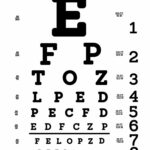The intersection of transgender identity and biblical interpretation is a complex and often fraught landscape. Navigating this terrain requires careful exegesis, sensitivity, and a willingness to grapple with potentially uncomfortable truths. It’s a conversation that challenges traditional understandings of gender, sexuality, and the very nature of humanity.
The Genesis Narrative: Creation and Binary Constructs
The opening chapters of Genesis frequently serve as a touchstone in discussions about gender. The creation narrative, with its assertion that God created humanity “male and female,” is often interpreted as affirming a strict binary understanding of gender. This perspective posits that biological sex, determined at birth, is intrinsically linked to gender identity and expression. The implication here suggests immutability.
However, a nuanced reading reveals potential complexities. The Hebrew word translated as “male” (zachar) and “female” (neqevah) primarily refers to biological sex. To equate these terms directly with modern concepts of gender identity, a psychosocial construct, presents a potential anachronism. Furthermore, some scholars argue that the creation account emphasizes relationality and complementarity between the sexes, rather than an absolute, restrictive definition of gender roles.
Deuteronomy 22:5: Cross-dressing and Gender Presentation
Deuteronomy 22:5, which prohibits cross-dressing (“A woman must not wear men’s clothing, nor a man wear women’s clothing, because the Lord your God detests anyone who does this.”), is another frequently cited passage. Interpretations range widely, from a literal condemnation of any deviation from traditional gendered attire to a contextual understanding rooted in ancient Israelite societal norms and potentially pagan religious practices that involved ritualistic cross-dressing.
It’s crucial to consider the cultural context of this law. The purpose may have been to prevent the blurring of social roles and maintain distinctions considered essential for societal order. It’s important to note the socio-economic considerations involved.
Applying this verse directly to transgender individuals requires careful consideration. Is the issue merely one of clothing, or does it encompass a deeper incongruence between assigned sex and experienced gender identity? Are we equating voluntary performance with core identity?
Eunuchs: A Biblical Category Beyond the Binary
Interestingly, the Bible also acknowledges the existence of eunuchs, individuals who, in ancient times, often occupied a social space outside the strict male/female binary. While some eunuchs were physically castrated, others were considered eunuchs “from birth” or “by men.” Jesus himself refers to eunuchs in Matthew 19:12, stating, “For there are eunuchs who were born that way from their mother’s womb, and there are eunuchs who have been made eunuchs by others, and there are those who choose to live like eunuchs for the sake of the kingdom of heaven. The one who can accept this should accept it.”
This passage raises intriguing questions. Does Jesus’s acknowledgement of different types of eunuchs suggest a broader understanding of gender variance than is typically acknowledged? Does the notion of “choosing to live like eunuchs” point to the possibility of individuals intentionally adopting a gender presentation that differs from their assigned sex?
Galatians 3:28: Unity in Christ and the Dissolution of Dichotomies
Perhaps one of the most relevant passages for considering the transgender experience within a biblical framework is Galatians 3:28: “There is neither Jew nor Gentile, neither slave nor free, nor is there male and female, for you are all one in Christ Jesus.”
This verse speaks to a radical equality and unity within the Christian community. The apostle Paul declares that traditional social distinctions, including those based on ethnicity, social status, and sex, are rendered irrelevant in Christ. Does this “oneness” transcend conventional gender categories? Some argue that it affirms the inherent dignity and worth of all individuals, regardless of their gender identity or expression.
Others caution against interpreting this verse as a complete erasure of gender distinctions. They argue that it speaks primarily to spiritual equality and does not necessarily negate the importance of biological sex or traditional gender roles. How should we balance the emphasis on unity with the recognition of difference?
Love, Compassion, and Discernment
Ultimately, the Bible does not explicitly address the modern concept of transgender identity. Consequently, Christians hold diverse perspectives on this issue. Some emphasize the importance of upholding traditional gender roles and adhering to what they perceive as a clear biblical mandate regarding sex and gender. Others prioritize love, compassion, and acceptance, arguing that the church should be a welcoming and affirming space for all individuals, regardless of their gender identity.
Navigating this complex topic requires humility, a willingness to listen to diverse perspectives, and a commitment to interpreting scripture responsibly. It demands a rejection of simplistic answers and a willingness to grapple with the ethical, theological, and pastoral implications of transgender identity within the context of faith. The discourse necessitates a spirit of inquiry. Consider the ramifications carefully.









Leave a Comment